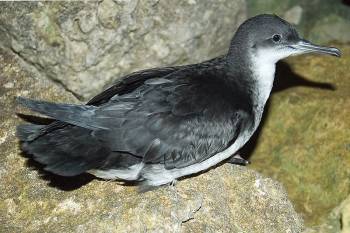Karen Bourgeois and Sylvain Dromzée (A dos d’Îles – Association for the Study and Conservation of Insular Biodiversity, Lançon de Provence, France) writing in the Journal of Ornithology have looked at onset of moult in breeding Yelkouan Shearwaters Puffinus yelkouan – a species that has been proposed for listing within the Albatross and Petrel Agreement
The paper’s abstract follows:
“Biochemical analyses of feathers are increasingly used to study seabird at-sea distribution, movements, pollutant exposure and trophic level. However, such studies are intrinsically related to the knowledge of the target species moulting strategies. In this study, we analysed the moulting strategies of the Yelkouan Shearwater Puffinus yelkouan at three breeding sites, by scoring the moult of wing, tail and body feathers during the breeding season. While we observed virtually no bird growing its wing feathers, some Yelkouan Shearwaters started moulting their tail and body feathers during late incubation. Moult intensified during chick-rearing. We did not find any significant effect of sex, breeding status or year on moulting patterns. However, moulting strategies varied among individuals, as only a proportion of birds was actively moulting at the various breeding stages and moulting patterns varied among breeding sites. Based on our study, it is evident that factors determining moulting strategies in the Yelkouan Shearwater remain to be elucidated. This study underlines the need to carefully select the most convenient target feathers to ensure the correct development of studies based on the biochemical analysis of feathers as moulting strategies in seabirds can be rather variable.”
Yelkouan Shearwater, photographed by Borg Cardona
Reference:
Bourgeois, K. & Dromzée, S. 2013. Moulting strategies of the Yelkouan Shearwater Puffinus yelkouan during the breeding season. Journal of Ornithology DOI 10.1007/s10336-013-1011-y.
John Cooper, ACAP Information Officer, 20 October 2013

 English
English  Français
Français  Español
Español 